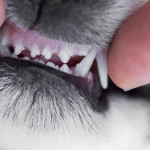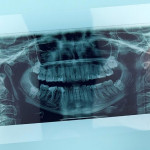
【专家评论/Dr. Phoebe】
One of the most frequent problems in clinic is sensitivity on teeth. Note, there is a difference between “pain” vs “sensitivity.” If you have throbbing, aching tooth pain in the midnight, please seek out help from a dentist immediately but rather the lingering sensitivity after you take a bite of that vanilla ice cream, drinking that hot coca, or eating that piece of sugary chocolate. Here below, I listed two common scenarios where teeth sensitivity may occur, and how to address them.
1. Sensitivity after a dental treatment
Many patients might feel sensitivity, or even borderline pain after a dental filling, root canal, teeth whitening/bleaching. Patients might complain that their teeth did not seem to bother them prior to the treatment, but started to become sensitive only after the dental treatment. This is indeed quite common, and most of the time, normal. In the middle of our tooth is the pulp chamber, where our nerve is located at. Sensitivity may arise as a response to the dental treatment, and it can last anytime between one to four weeks. Most patients slowly realize that the sensitivity will go away, as the tooth returns back to its normal sensation. However, some patients do find that sensitivity continues to become more prominent. At that point, it is best for the patient to consult with the dentist upon further treatment or next step.
2. Sensitivity from exposed root
Another common type of sensitivity comes from exposed root structure. Often times, these patients will point to a non-carious tooth that has no previous dental treatment and complains of extreme sensitivity.
One of the many related reasons is brushing too hard on the sensitive area, causing the gum line to recede and exposing the sensitive root structure. If that is the case, we generally recommend patient to switch hands on brushing the teeth in order to decrease the amount of “force” used upon brushing. Furthermore, we will recommend using soft bristle toothbrush along with more mild toothpaste.
Another reason for sensitivity may be exposed root surface from gum line recession. Many times, our bone level in the mouth decreases with age, which leads to gum recession. When the gum line recedes, our root structure is further exposed. Exposed root structure is more sensitive than the clinical crown portion of the tooth structure. Unfortunately, recession is non-reversible, but some dental offices may be able to place certain protective materials to reduce the sensitivity on the exposed root portion to alleviate the sensitivity.
Dental sensitivity may include, but not limited to, dental caries, unhealthy gum tissue, and many other reasons. It is advised for the patient to seek help from the dentist in order to accurately pinpoint the source of sensitivity and to properly address the situation.









Polygon recent comments